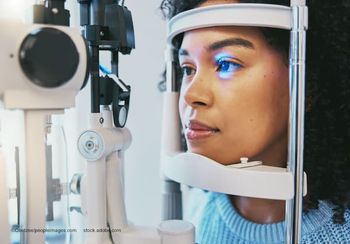
Intense pulsed light shows therapeutic potential for MGD
A series of treatments using intense pulsed light with optimal pulse technology may show potential in patients with meibomian gland dysfunction.
Reviewed by Sheila Chang Barbarino, MD, and Steven J. Dell, MD
Austin, TX-Intense pulsed light (IPL) can significantly reduce symptoms of dry eye caused by meibomian gland dysfunction (MGD), a new study shows.
Related:
“It’s very exciting to be a part of this study and see just how much improvement we are seeing on our chronic dry eye patients who have tried all other treatments with only minimal success,” said Sheila Chang Barbarino, MD.
She collaborated on the study with Steven J. Dell, MD. Both practice at Dell Laser Consultants in Austin, TX.
Most patients with dry eye suffer from meibomian gland dysfunction. Signs of the disease can include plugged or capped meibomian gland orifices, lid margin thickening, irregularity telangiectasia and hyperemia.
In most cases, tear break up time is reduced, and endogenous debris contaminate the tear film.
Recent:
Eyelid inflammation plays an important role in meibomian gland dysfunction, Dr. Barbarino said. Abnormal blood vessels may form, releasing pro-inflammatory agents.
Eventually, the meibomian glands may atrophy, failing to secrete adequate oil for the tear film, allowing a faster evaporation of the underlying aqueous layer and prompting symptoms of dry eye and ocular surface inflammation.
Artificial tears, heat application, and manual gland expression can open blocked gland orifices. Omega-3 supplementation, oral tetracyclines corticosteroids and topical cyclosporine can reduce the inflammation, while topical antibiotics can control local infection.
More:
But all of these treatments alone or together have low patient satisfaction rates, are costly and have to be used daily by the patient to have any effect on their dry eye, according to Dr. Barbarino.
Intense pulsed light arrived on the scene when patients receiving aesthetic treatments for rosacea reported that their dry eye symptoms had improved.
Recent:
“I noticed about 4 or 5 years ago that a lot of our cosmetic patients were noticing that their dry eye was improving after completing a series of IPL treatments,” Dr. Barbarino said. “My colleagues who were also performing IPLs were reporting that their patients were also feeling a difference.”
Intense pulsed light devices emit polychromatic light from 515 nm to 1,200 nm. By modulating wavelengths, physicians can target different tissues.
Related:
In treating rosacea, operators can select wavelengths that are absorbed in hemoglobin, allowing them to destroy abnormal blood vessels. Abnormal vessels are selectively affected because they are more superficial and telangectasic then the normal cutaneous skin vessels, Dr. Barbarino noted.
In addition, the laser may provide some secondary benefits by heating the glands, melting the solidified secretions much in the way a hot compress works, she added.
Investigators have retrospectively reported multiple case series in which patients showed improvement in dry eye signs and symptoms, but there are few prospective trials.
Related:
To fill this gap, Dr. Barbarino and her colleagues recruited 40 people with moderate to severe meibomian gland dysfunction as measured by tear break-up time, symptoms reported on the Standard Patient Evaluation of Eye Dryness (SPEED) questionnaire, gland expressibility on the Meibomian Glands Yielding Liquid Secretion score, epithelial defects as measured by Corneal Fluorescein Staining and tear osmolarity.
Courtesy of Sheila Chang Barbarino, MD
The researchers administered four intense pulsed light sessions 3 weeks apart (Lumenis M22-IPL with Optimal Pulse Technology). In each patient, they tried the laser on a test spot before the treatment. If skin did not return to its normal color within 10 minutes a lower setting was used for the treatment.
More:
Patients should avoid sun exposure for at least 24 to 48 hours before and after each treatment, Dr. Barbarino advised.
The researchers directed the laser to the lower eyelids in a stripe from one side to the other. After each treatment they expressed both the upper and lower meibomian glands. They followed up 9, 12 and 15 weeks after the first session.
On average, tear breakup time increased from 4.5 seconds at baseline to 7.7 seconds at 9 week, 8.7 seconds at 12 weeks and 11.8 seconds at 15 weeks. A tear breakup time of less than 10 seconds is considered indicative of dry eye, said Dr. Barbarino. The improvements were statistically significant (p < 0.0001).
Epithelial defects measured on corneal fluorescein staining decreased by 25% at 9 weeks, 42% at 12 weeks and 43% at 15 weeks, reaching statistical significance (P < 0.0001).
Symptoms on the SPEED dropped 52%, and reached 53% at 15 weeks before rebounding to 46%. The meibomian gland score dropped 39% at 9 weeks, and stayed about at that level for the subsequent follow-ups. The improvements over baseline in SPEED and meibomian gland score were all statistically significant (p < 0.01).
More:
Tear osmolarity dropped from 305 mOsm/L at baseline to 297 at 12 weeks and stayed about at that level, which was also significant (p < 0.05).
The patients reported having to use fewer eye daily drops after their series of treatments, as well, Dr. Barbarino said. The only measure on which the researchers did not record an improvement was lipid layer thickness, she added, but the patient’s lipid layer quality was much improved from baseline.
And overall the improvements are greater than those seen with warm compresses, drops, plugs and oral medications, she pointed out, indicating that the laser’s secondary effect goes beyond warming the glands.
Related:
“I am looking forward to being a part of the continuously evolving arena of new, advanced treatments for dry eye,” Dr. Barbarino said.
She continues to offer intense pulse laser to her patients with meibomian gland dysfunction.
Sheila Chang Barbarino, MD
P: 512/347-0255
This article was adapted from a presentation at the 2016 meeting of the American Society of Cataract and Refractive Surgery. Dr. Barbarino disclosed she is a consultant for Allergan, Candela/Syneron, and Lumenis.
Newsletter
Don’t miss out—get Ophthalmology Times updates on the latest clinical advancements and expert interviews, straight to your inbox.


















































.png)


